Barbunya pilaki is a classic dish from Turkish cuisine. It has the best combination of borlotti beans with olive oil, tomato, carrot, and potato flavors. Both kids and adults love it. If you want a light yet tasty and satisfying dish, this recipe is for you!
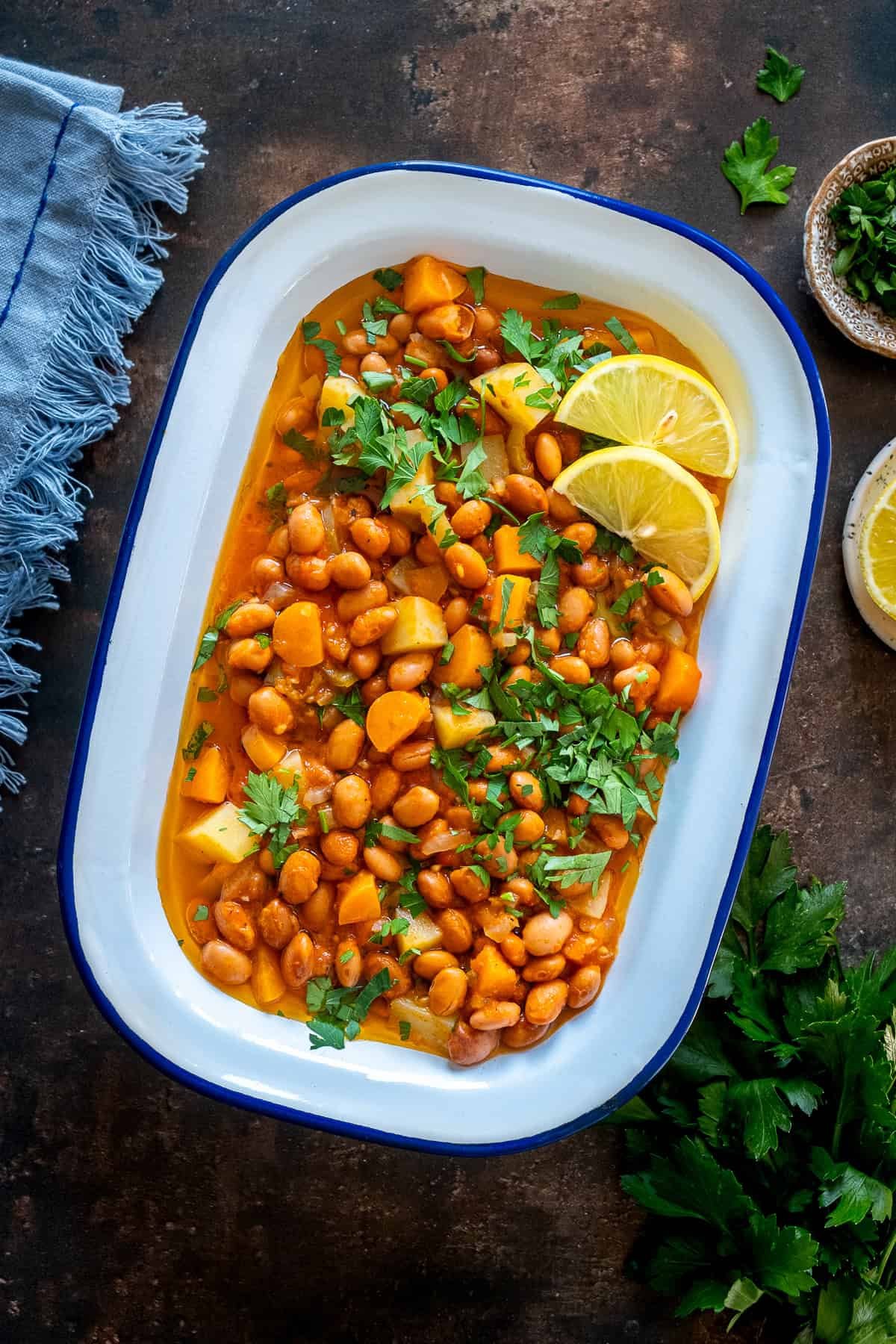
What is Barbunya Pilaki?
Barbunya pilaki (Turkish style borlotti beans) is one of our favorite Turkish olive oil dishes.
Barbunya is a type of bean that grows in summer. It comes in a pink-striped pod and the beans inside also have pink spots. You can easily find them at farmer's markets in Turkey, but it might not be that easy elsewhere.
In Turkish cooking, we make pilaki with fresh barbunya beans, dried beans, or canned ones.
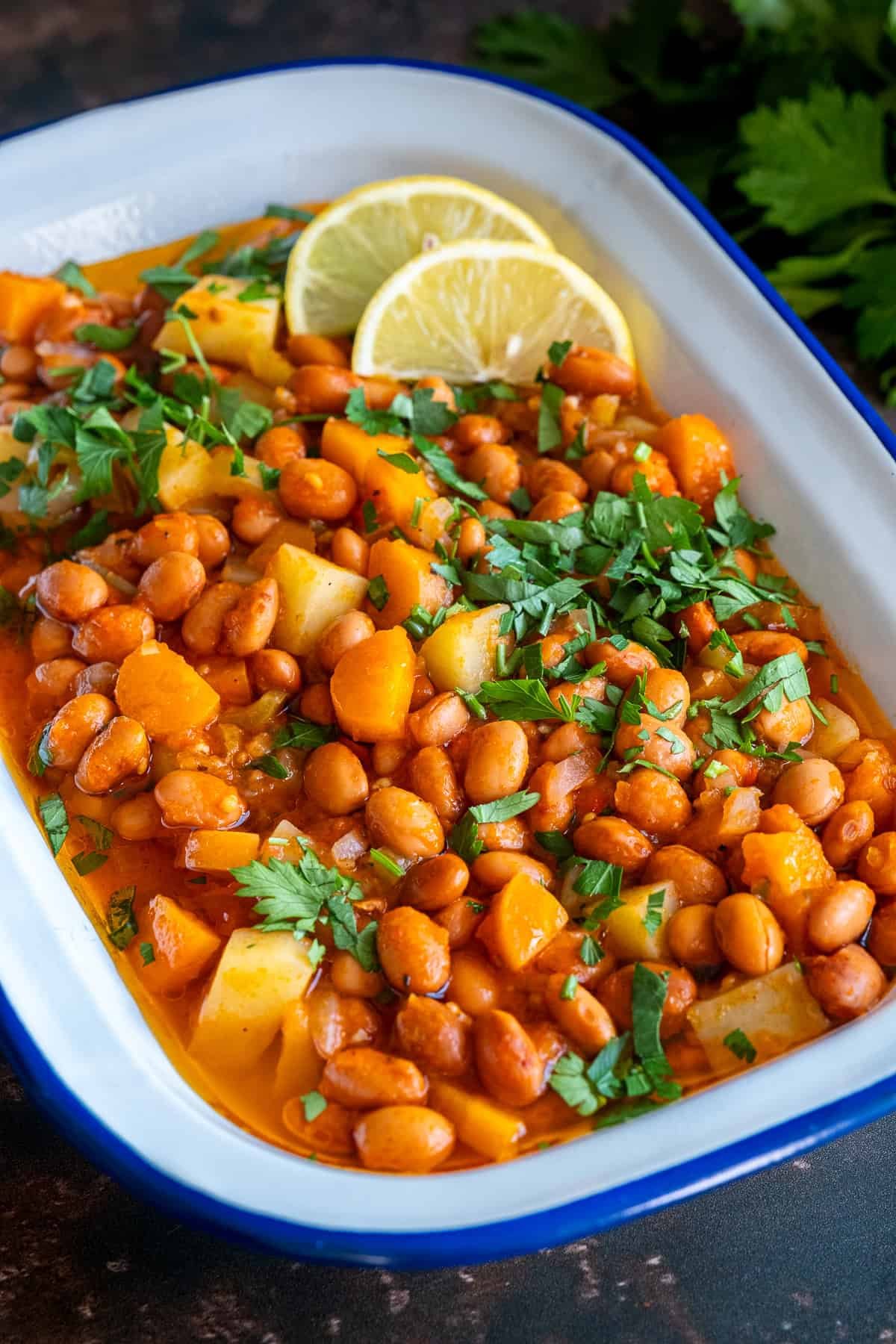
The full name of the dish is barbunya pilaki, but in Turkey people often just call it barbunya. You will even see it written that way on menus. That’s because this pilaki is the only dish made with these beans, so when someone says “barbunya,” it is understood that they mean this recipe.
So what is pilaki? Pilaki is a cooking style. Vegetables or beans are cooked with plenty of olive oil and onions, flavored with lemon juice and garlic, and served cold or at room temperature with a sprinkle of parsley on top.
The most famous pilaki in Turkey is barbunya pilaki. Especially in summer, people enjoy it as a light main dish or as a part of a meze spread next to rakı, the traditional Turkish drink.
About the Ingredients
You can find the full list of ingredients in the recipe card below.
Barbunya pilaki needs just a few simple ingredients. Here are the key ones:
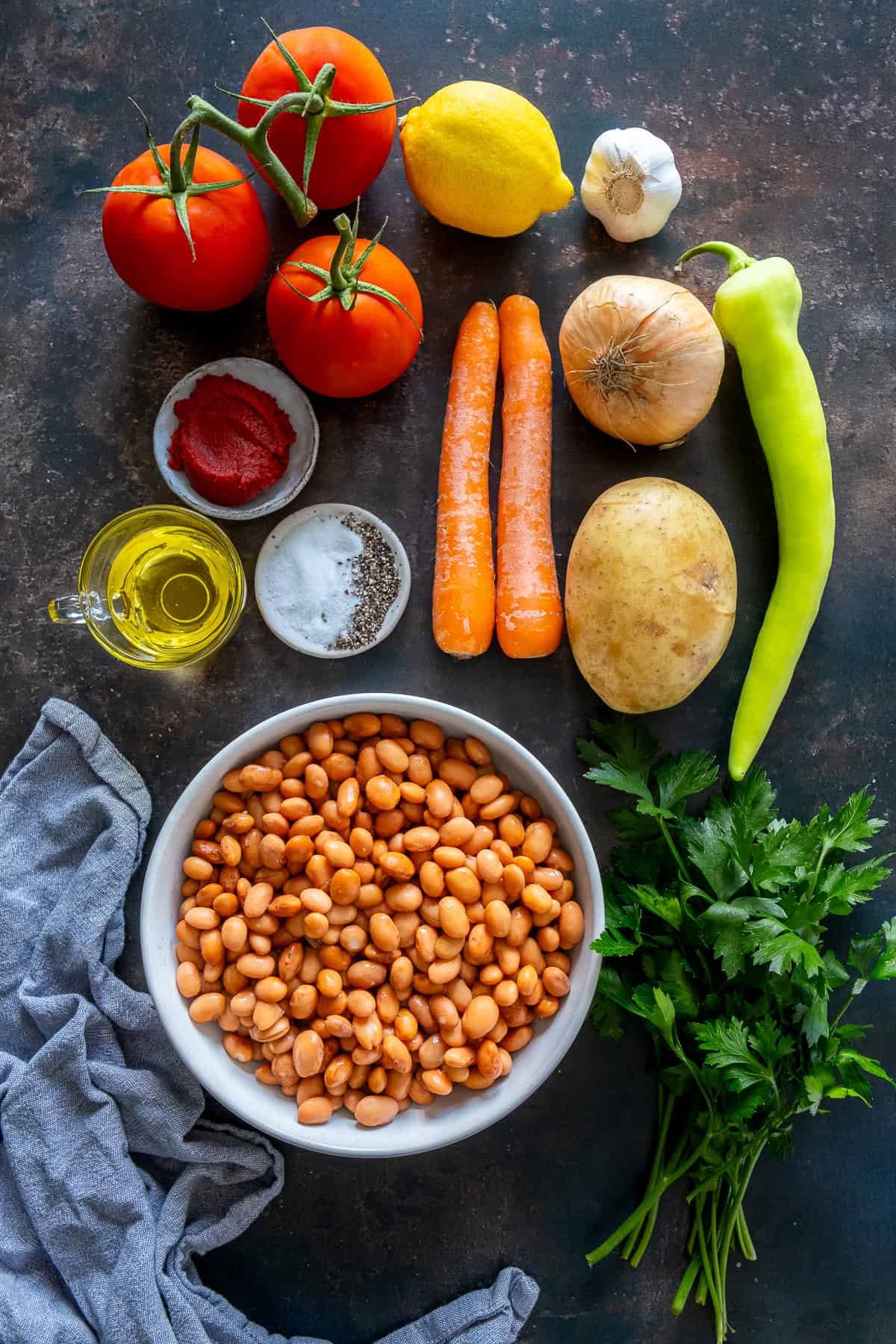
Barbunya (Borlotti Beans): Also known as cranberry beans or romano beans. Fresh borlotti beans are not easy to find if you are not in Turkey, but dried or canned versions are common. In this recipe, we use canned beans, but you can find instructions for fresh and dried beans in the recipe notes.
Tomatoes: We strongly recommend using fresh tomatoes. If you use canned ones, the dish won’t have the same fresh and light taste, and you won’t get the authentic flavor. To puree the tomatoes, peel them first and blend, or simply grate them with skin on and discard the leftover skin.
Vegetables: We use potatoes and carrots in this recipe. These are optional in traditional Turkish-style borlotti beans, but we love the richer taste they add. We also add a green pepper just because we like the flavor. You can skip it if you prefer.
Olive Oil: This dish belongs to a category in Turkish cuisine called zeytinyağlılar (olive oil dishes). They are cooked with olive oil and served at room temperature. So make sure to use a good-quality olive oil, the kind you’ll want to dip your bread into.
How to Make Barbunya Pilaki
You can find the full instructions in the recipe card below.
Barbunya pilaki is one of the simplest dishes in Turkish cuisine. Everything cooks in one pan with olive oil, which makes it easy and practical.
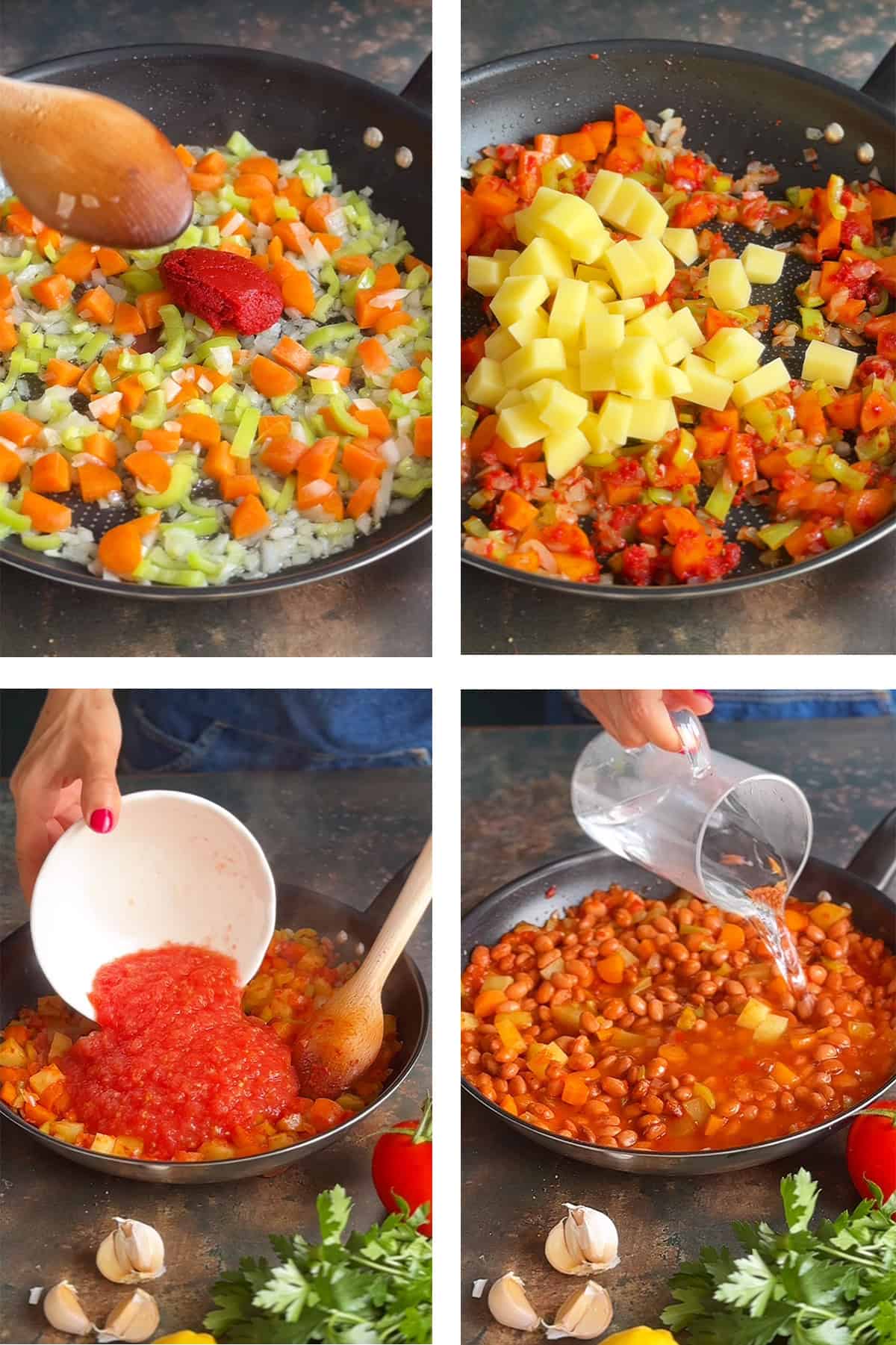
First, onions, peppers, and carrots are sautéed in olive oil. Then tomato paste, potatoes, and pureed fresh tomatoes are added and cooked until the vegetables are tender. Next come the cooked beans, some hot water, salt, and pepper. Finally, the dish is finished with garlic and lemon juice.
Once cooked, it is left to cool completely in the pan. Before serving, a drizzle of olive oil and a sprinkle of fresh parsley make it extra delicious.
Do You Need to Add Sugar?
In classic Turkish-style borlotti bean recipes, a little sugar is often added, about 1 teaspoon. But since we already use carrots in this dish, we think their natural sweetness is enough.
Borlotti beans themselves also have a slightly sweet flavor. So we don’t feel the need to add extra sugar, and the result is still perfectly balanced and delicious.
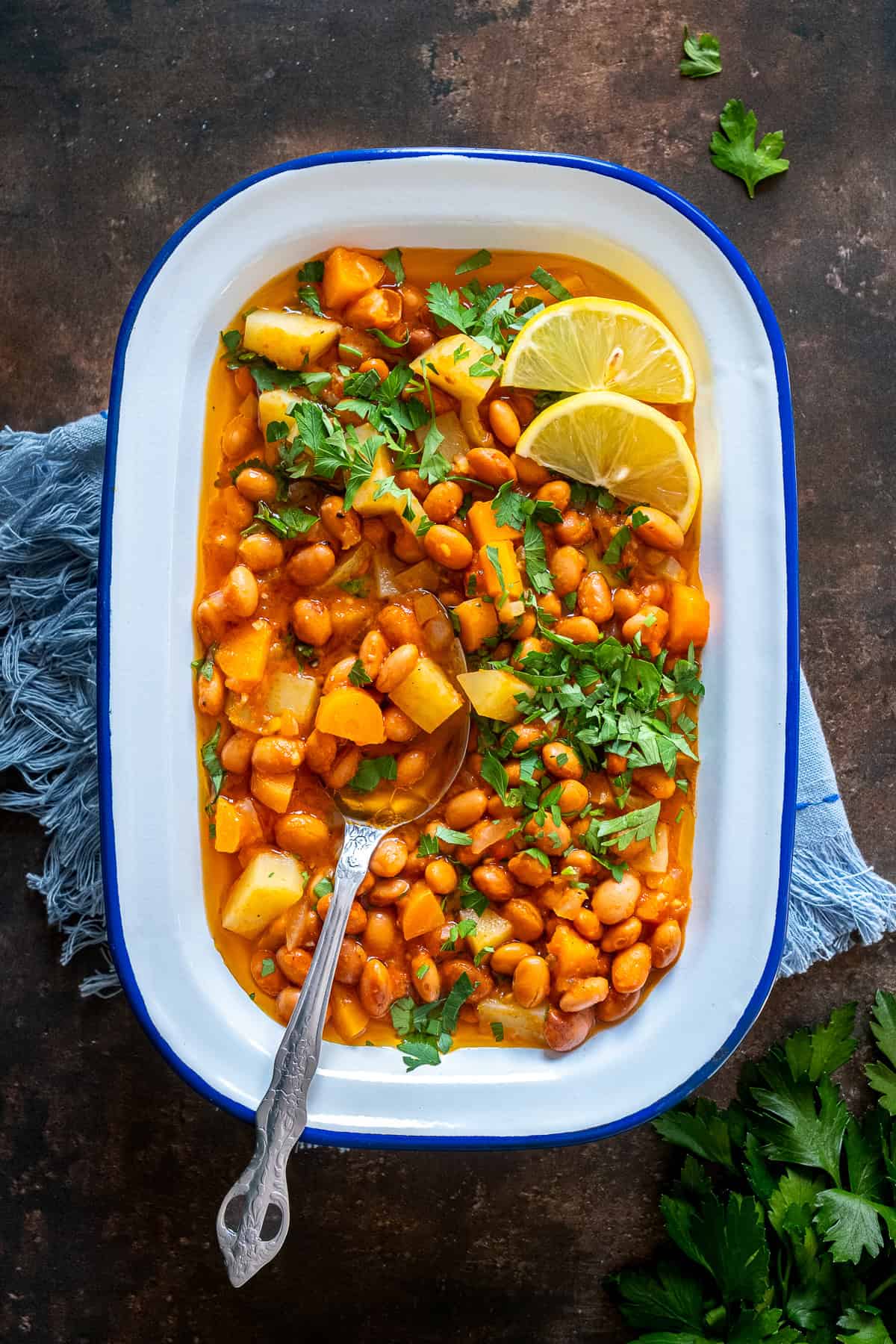
Why Add Garlic at the End?
We add the mashed garlic at the very last step because we don’t want its flavor to disappear during cooking. If garlic is added too early, it loses its freshness and becomes mild.
By stirring it in right at the end and cooking for just 1 minute before turning off the heat, you keep its aroma bright and tasty. This little step makes a big difference in the final flavor of barbunya pilaki.
Extra Olive Oil Before Serving
After the dish has cooled, we like to drizzle some extra olive oil on top before serving. You might think there is already enough olive oil in the dish, but we Turks can easily enjoy a meal just by dipping bread into good olive oil.
That’s why we love serving barbunya pilaki with plenty of it. Adding a drizzle right before serving brings out the fresh, raw flavor of the olive oil. Of course, this is totally up to you. If you don’t want it too oily, you can skip this step.
Serving Suggestions
Barbunya pilaki is traditionally served at room temperature, but you can also enjoy it warm if you like.
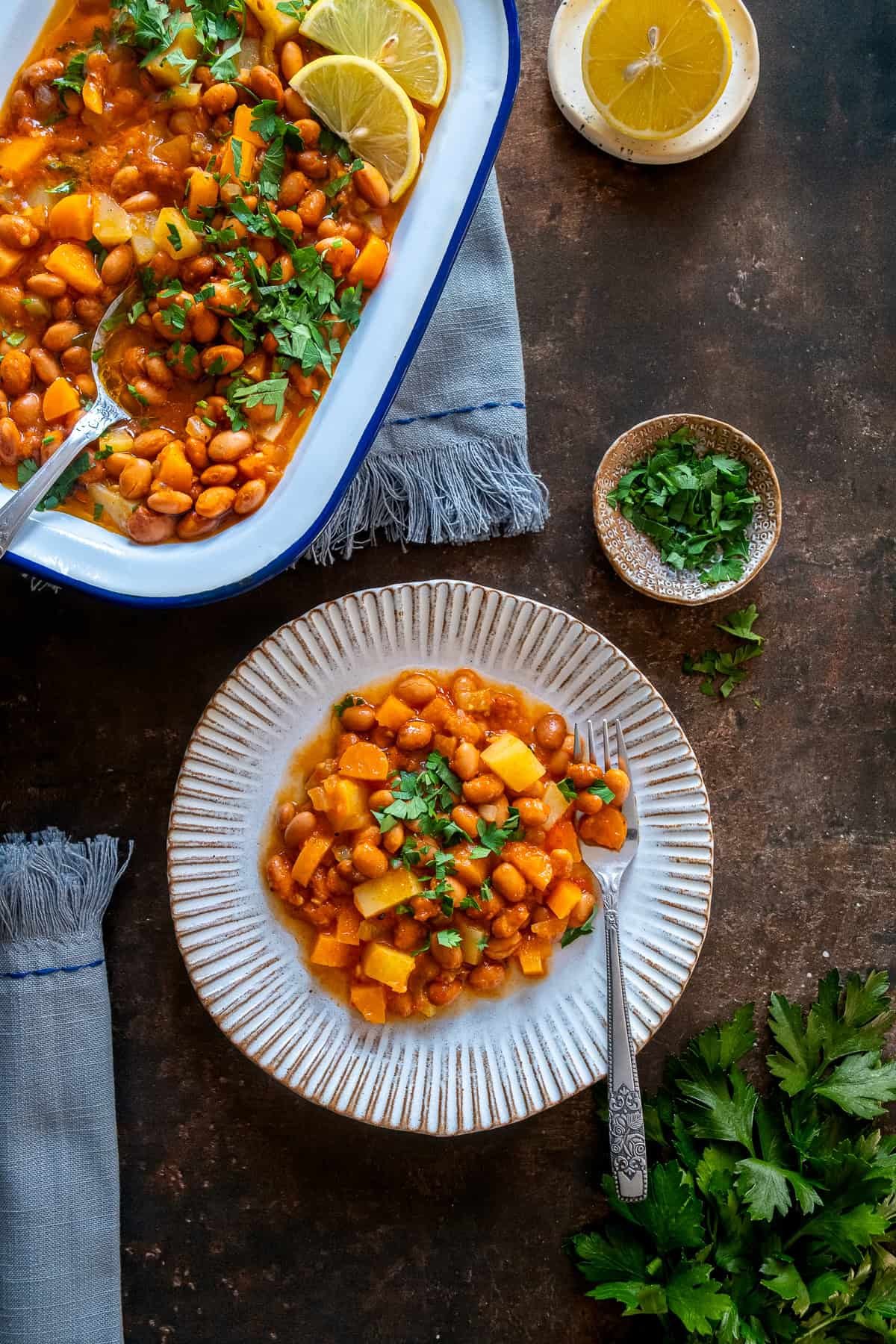
It’s often eaten as a light main dish in summer, with some crusty bread on the side to dip into the olive oil sauce. You can also serve it as part of a meze spread, together with other Turkish appetizers. And if you want a more filling meal, pair it with Turkish rice or bulgur pilav.
It also goes really well with a fresh çoban salata (Turkish shepherd’s salad) or some pickles on the side.
Don’t forget to add extra lemon wedges on the table. Many people (including us) love to squeeze more lemon juice on their portion for extra freshness.
Make Ahead & Storage
Barbunya pilaki is a perfect make-ahead dish. In fact, it tastes even better the next day as the flavors develop more.
You can store it in an airtight container in the fridge for up to 4 days. Always bring it to room temperature before serving, or enjoy it slightly chilled.
It also freezes well. Place it in freezer-safe containers and keep for up to 3 months. Thaw in the fridge overnight, then make sure it comes to room temperature before serving. If you prefer, you can warm it up slightly before eating.
Can I Use Dried Borlotti Beans?
Yes! To use dried borlotti beans (cranberry beans), start with 250 grams. Soak them overnight, drain, then cook in a pot of water: bring to a boil, reduce to a simmer, and cook partially covered until tender but not mushy (about 50–60 minutes). Drain and continue with the recipe.
Can I Use Fresh Borlotti Beans?
Yes! To use fresh barbunya, start with about 1 kilo in pods. Once you shell them, you will have around 400–500 grams of fresh beans. Cook them in boiling water for about 10 minutes, until slightly tender. Drain and then continue with the rest of the recipe.
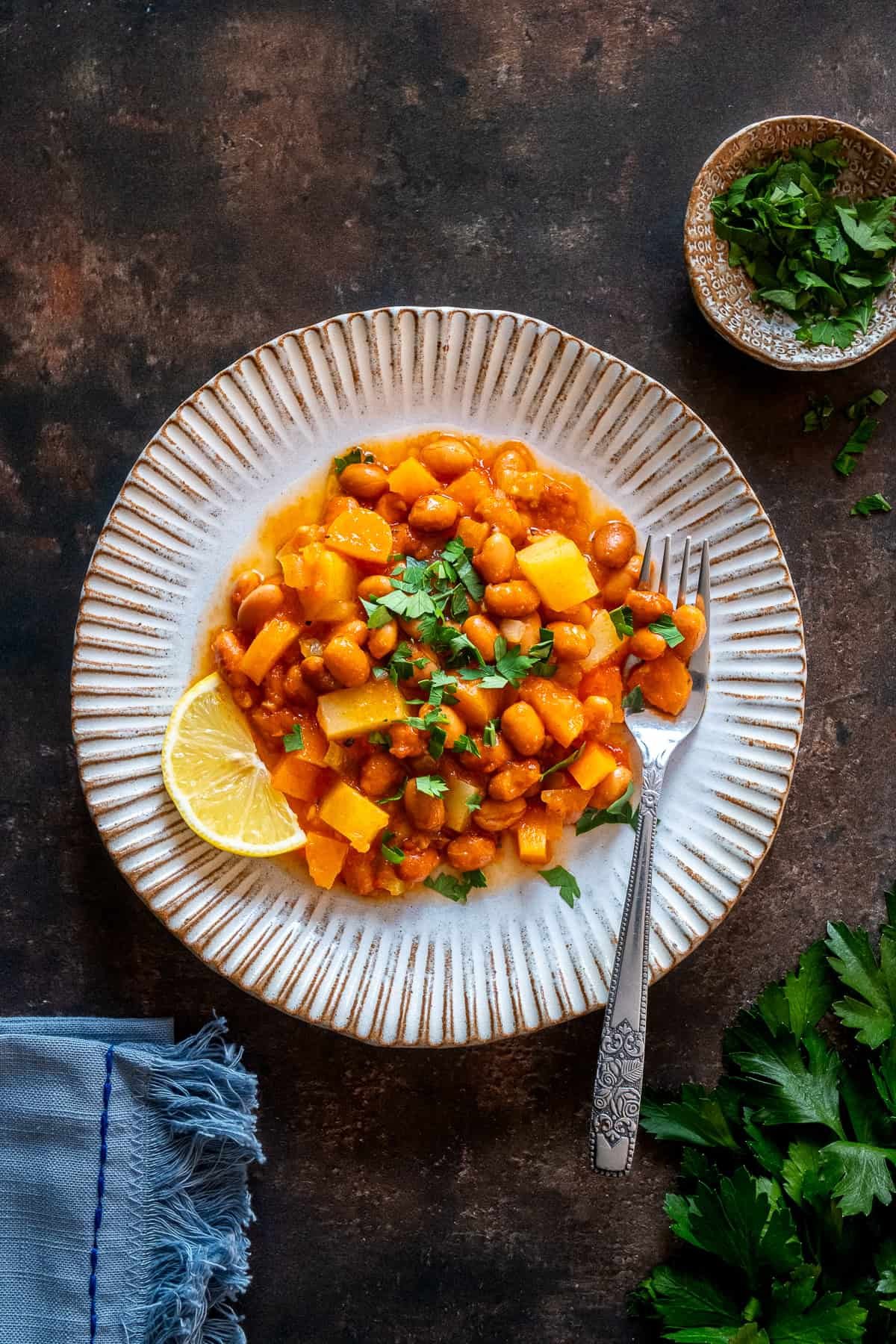
More Turkish Olive Oil Dishes
- Zeytinyagli Taze Fasulye (Turkish Style Green Beans)
- Imam Bayildi
- Bamya (Turkish Style Okra)
- Kereviz Yemegi (Turkish Style Celeriac)
As always: If you make this recipe, let us know what you think by rating it and leaving a comment below. And post a pic on Instagram too—tag @give_recipe so we can see!
Sign up for the FREE GiveRecipe Newsletter to get the new recipes into your inbox! And stay in touch with us on Facebook, Pinterest, YouTube and Instagram for all the latest updates.
📖 Recipe
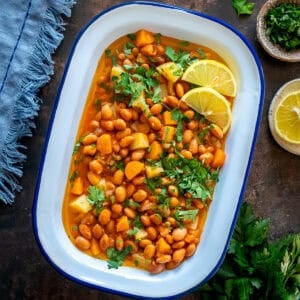
Barbunya Pilaki
INGREDIENTS
- 3 tablespoons olive oil
- 1 medium onion diced
- 1 Turkish green pepper, banana pepper or ½ small green bell pepper, diced
- 2 medium carrots diced
- 1 tablespoon tomato paste
- 1 medium potato diced
- 4 large tomatoes pureed (about 350 ml when pureed) – see Note 1
- 400 g borlotti beans 1 can, drained – see Notes 2 & 3 for using fresh or dried beans
- Salt and pepper to taste
- 200 ml hot water
- 2 cloves garlic mashed
- 1 lemon juiced
- 2 tablespoons parsley chopped
INSTRUCTIONS
- Heat the olive oil in a large pan over medium-high heat. Add the diced onion and cook until translucent. 3 tablespoons olive oil, 1 medium onion
- Add the diced pepper and cook for 2–3 minutes, stirring often. 1 Turkish green pepper, banana pepper
- Stir in the carrots, cover, and cook for about 5 minutes. Reduce the heat a little if it gets too dry. 2 medium carrots
- Add the tomato paste, stir, then add the potatoes. Cook for a few minutes, stirring often. 1 tablespoon tomato paste, 1 medium potato
- Pour in the pureed tomatoes, stir, cover, and cook over medium-low heat for 10–15 minutes, or until the potatoes are tender. 4 large tomatoes
- Add the drained borlotti beans (barbunya), salt, pepper, and hot water. Stir and cook covered for about 5 minutes. 400 g borlotti beans, Salt and pepper, 200 ml hot water
- Stir in the mashed garlic and lemon juice, and cook for 1 more minute. 2 cloves garlic, 1 lemon
- Remove from the heat and let it cool completely in the pan (see Note 3).
- Once at room temperature, drizzle with extra olive oil (see Note 4).
- Sprinkle with chopped parsley and serve with extra lemon wedges on the side (see Note 5). 2 tablespoons parsley
NOTES
- We recommend using fresh tomatoes for this recipe, no matter the season. Canned tomatoes work too, but the taste will be different. To puree, peel the tomatoes and blend them, or grate them with skin on and discard the leftover skin – just like it’s often done in Turkish homes.
- To use dried borlotti beans (cranberry beans), start with 250 grams. Soak overnight, drain, then cook in a pot of water: bring to a boil, reduce to a simmer, and cook partially covered until tender but not mushy (about 50–60 minutes). Drain and continue with the recipe.
- To use fresh barbunya, start with about 1 kilo in pods. Once you shell them, you will have around 400–500 grams of fresh beans. Cook them in boiling water for about 10 minutes, until slightly tender. Drain and then continue with the rest of the recipe.
- Barbunya pilaki is traditionally served at room temperature, but you can enjoy it warm if you prefer.
- Drizzling with extra olive oil after cooling is optional. Turks love olive oil and often add more right before serving.
- We always keep extra lemon on the table, so everyone can squeeze more juice on their portion if they like, and we usually do!
NUTRITION
Nutrition information is automatically calculated, so should only be used as an approximation.


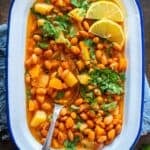
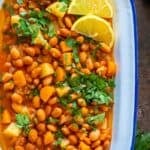
Mary Lu Campbell says
Is there a bean I can use as a substitute?
Zerrin & Yusuf says
Hi Mary,
You can use butter beans or regular white beans. You know, not all the beans have the same taste, so we recommend borlotti beans for this recipe for the most authentic taste. But the others work fine too, just the taste won't be exactly the same.